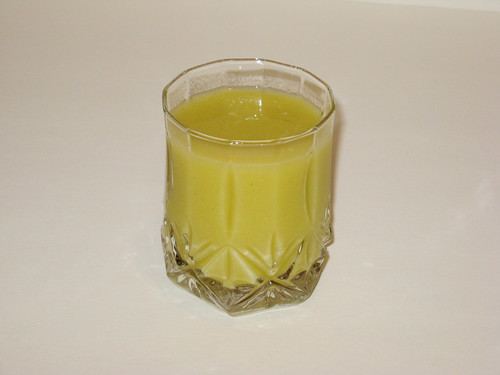Making your own juice is an excellent way of getting your daily vitamins and nutrients while you are out and about. This article will educate you on juicing.
Health Benefits
Pick a veggie that is dark green to use for the foundation of your juice, if you are creating juice to optimize health benefits. The juices should be 50 or 75% spinach, broccoli, chard, or other green for the best health benefits. Just pick other yummy fruits for the rest of the juice.
Choose the most ripe and sweetest apples you can find to make homemade apple juice with. It is okay to get apples that are bruised, just make sure you cut them out. Apples like Red Delicious, Gala, Fuji, and Rome have sweet tastes that lend themselves well to producing a rich, sweet, and flavorful juice.
When you are done juicing, wash your equipment right away. The juice of certain fruits and veggies can stain the juicer and its parts.
Juice Vegetables
You should juice vegetables if your kids simply do not like the taste or the look of them. As many parent know, children usually avoid vegetables. To get these children the nutrients they need from vegetables, it’s a good idea to juice vegetables together with fruits to develop a great tasting drink.
Pay close attention to your body’s signals concerning the juices you consume. There may be some that your system doesn’t agree with. If you experience nausea or other stomach upset, take the time to identify the ingredient that might have caused it. Often this will be something you rarely consume. Use smaller amounts of that fruit or vegetable to let your system get used to it.
Phytochemicals are found naturally in most fruits and vegetables. When ingested, these chemicals attack carcinogens in the body. When you’re planning your juices, always try to work with foods that contain phytochemicals!
If your age is catching up to you and making you feel tired or achy, adding juice to your life can return the spring to your step! Juices can add many nutrients to your diet that aid in arthritis pain, memory function and even slowing down cell death.
Mix cranberries with sweeter fruits such as strawberries or sweet vegetables such as carrots. This helps take the edge off of the cranberries’ bitter taste. Any sweet fruit will do, or even a sweet vegetable like a carrot. You can try watermelon, cantaloupe, strawberries, and many other different options to sweeten your juice. Mix them to your own liking.
You need to have a wonderful juicer to make the best juice; consider a masticating juicer. This type of juicer can also mill flower, grind nuts, puree fruit, and even create tasty desserts. If you’re making a lot of fruit juice, these additional features will definitely be appreciated.
One important juicing technique is to add produce you may not find palatable and mask its taste by adding items you enjoy. This will provide your body with nutrients that you might have been missing out on otherwise. Lemons and apples can be used to make other fruit and vegetable juices taste better.
Aim to include tons of negative calorie foods into your juicing in order to receive a very nutritious, healthy juice without having to burn off the fat that juicing can create. Items like broccoli, kale, cabbage, herbs, and other dark greens fit into this category. In addition, fruits that are high in fiber are an excellent choice, because it requires a large amount of digestion in order to effectively break them down.
Juicing is a great method to give your body the nutrients it needs to stay healthy. The juice from the fruits and vegetables gives you energy, and provides certain proteins that you need to efficiently build up muscles. If your exercise regimen is heavy, juicing fresh produce will replenish the electrolytes in your body after workouts. Add protein powder when you want to rebuild muscle.
You should store your green leafy vegetables in air tight bags to keep them fresh prior to making juice. Wash them thoroughly, then make sure they are dry before sealing them into bags.
If you are constipated, create a juice with beetroot, cabbage, fennel, brussel sprouts, grapes, figs or papaya. Drinking fresh juice on a regular basis will prevent chronic constipation.
When you make your own juice, realize that all the fruits are different. Some citrus fruits, such as tangerines and oranges, may require special equipment to properly extract their juice. Also, be careful when you use melon, as their juices tend to not mix well with other fruits.
The best time to drink your homemade juice is before you eat. Juice is a healthy snack anytime, but you get the greatest benefits from juice if it is ingested while the stomach is still empty. The juice will help to control your appetite at mealtimes and you’ll eat less.
Keep your juicer accessible to help establish a juicing habit. When you do this, you place a daily reminder on your kitchen counter of the nutritional benefits of juicing.
As previously mentioned, juicing is a convenient way to help ensure you receive the nutrients your body needs, even when life is hectic. In addition to giving you a way to concoct your own delicious juices, juicing enables you to receive the nutrients from whole vegetables and fruit without your having to ingest them. If you apply the handy tips detailed above, you will be well on your way to enjoying fresh and homemade juice each day.











